National Appreciation Week for Animal and Rescue Shelters
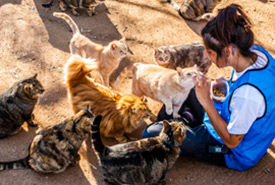
Me volunteering at the Funds for Animals Wildlife Center in Ramona, California. (Photo by the Humane Society of the United States)
As an animal lover, my social media feed tends to be filled with animal-related posts. It consists of heartwarming stories, such as animal rescues, adoption stories, species reintroductions, etc. If you also have a soft spot for animals, you’ll probably say “aww,” then like and share these posts, but there’s one thing the majority of us don’t do. Can you guess what that is?
We forget to thank the teams that make up our animal shelters and animal rescue organizations. And so, this week is all about giving thanks and appreciation to the dedicated workers and volunteers who help out animals — both pets and wildlife — every single day.
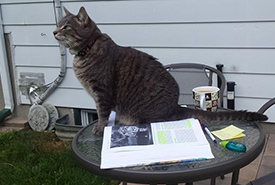
Ducky, my cat (Photo by Tina-Louise Rossit)
Animal shelters today are very different from their older counterparts. Since the 1990s, animal shelters have significantly expanded their roles from merely drop-off centres for abandoned pets and strays, to taking a lead in pet welfare education and, in some cases, partnering with conservation organizations. The heroes that run these facilities are from different professional backgrounds and/or are passionate volunteers.
Animal rescue centres are the more active and diversified versions of shelters. In urban areas, there are pet rescues, urban wildlife rescues and their corresponding rehabilitation centres. For wild animals, rescue teams help sick, injured and/or orphaned animals and restore their strength to be released back into the wild. Many of these rescue teams also conduct research projects aimed at observing the species’ behaviours and habitat needs. Animal rescue is relatively new, but becoming increasingly important.
Across the country, the Nature Conservancy of Canada (NCC) teams up with several animal conservation projects/programs. Some examples include: Ducks Unlimited Canada, Environment Canada, FloraQuebec, several Quebec rescue teams for wildlife rehabilitation, Toronto Zoo, TD Forests Program and a number of universities in both Canada and the United States. Collaboration can strengthen our efforts to preserve Canada’s biodiversity. Since this week is Appreciation Week, let’s shed some light on two examples of how NCC is helping rehabilitate species.
Napanee Plain and shrikes
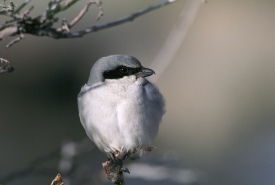
Eastern loggerhead shrike (Photo by Dave Menke, courtesy of USFWS)
The eastern loggerhead shrike is spectacular. Also known as the butcher bird, this predatory songbird impales its prey onto thorns to save its meals for later (Mmm, grasshopper kebabs). Despite their hunting strategy, shrikes are actually shy birds and very sensitive to environmental conditions. To thrive, they need wild, open grassland habitats, which are found in only two areas in Ontario — the Napanee Plain and the Carden Alvar. They’re having a hard time keeping up with habitat loss, erratic weather changes and car collisions. And so, they’re disappearing.
On NCC’s Napanee Plain Alvar Nature Reserve, NCC has partnered with Wildlife Preservation Canada to release captive-bred eastern loggerhead shrikes. The aim is to increase the size of the wild population. Each year, biologists in charge of the program see success with more birds returning to breed on the alvar.
Alberta and swift fox reintroduction
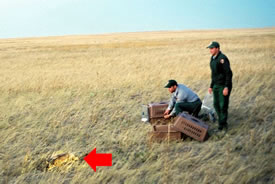
Swift fox release by USFWS (Photo by Corlaine Gardner)
Successful rescue stories are heartwarming. However, they stem from heartbreaking beginnings. Swift foxes used to be abundant in the grass prairies of southern Alberta before settlement. As farms grew in numbers and size, the loss of habitat forced swift foxes to leave the area. In the 1930s, this species was declared extirpated in Canada.
In the 1960s and 1970s, when the importance of environmental conservation started making strides, bringing back wildlife was a priority. Among the list: swift fox. Captive-breeding programs were used to reintroduce these animals back into the prairies in Alberta and Saskatchewan. Thanks to these efforts, there is now a small but stable population of wild swift foxes in both provinces.
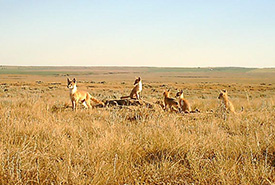
Swift foxes (Photo by NCC)
This year, NCC was able to prove the importance of our conservation work when a family of these rare animals decided to make a den on an NCC property that was conserved nearly a decade ago. This story is to be continued, but at least it is in a positive light.
Now, these are two examples that we can be thankful for today. You can follow all the other projects NCC is working on, but the best thing you can do this week is get out and go thank your local animal shelter or rescue centre in person! Bring cookies or treats for the animals, donate unwanted items or money, or simply pass by and give them a big thank you for their work!


